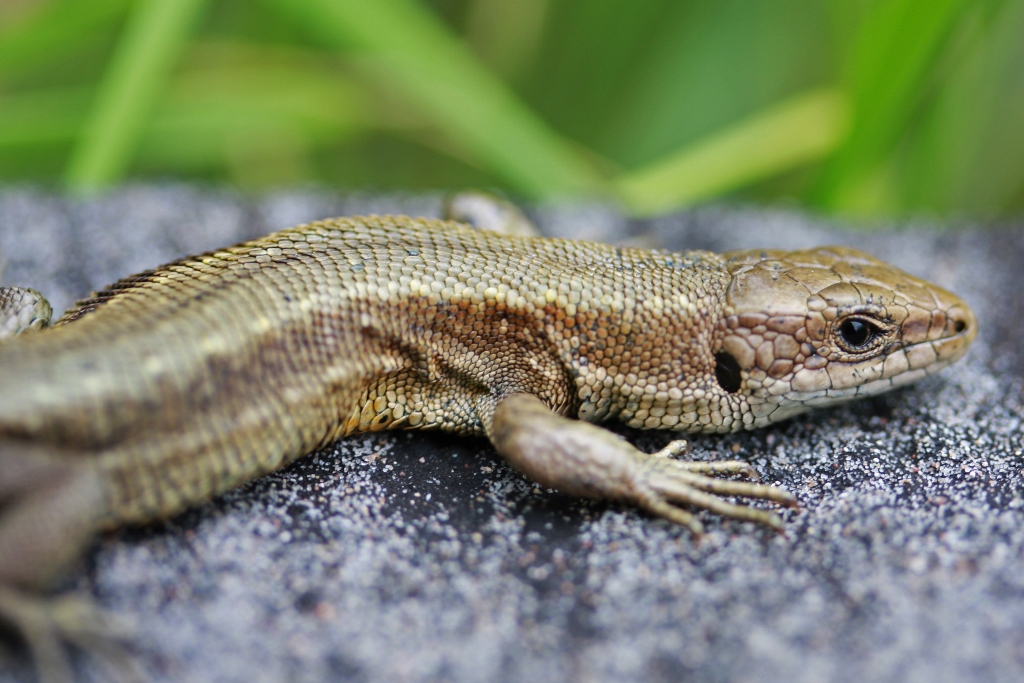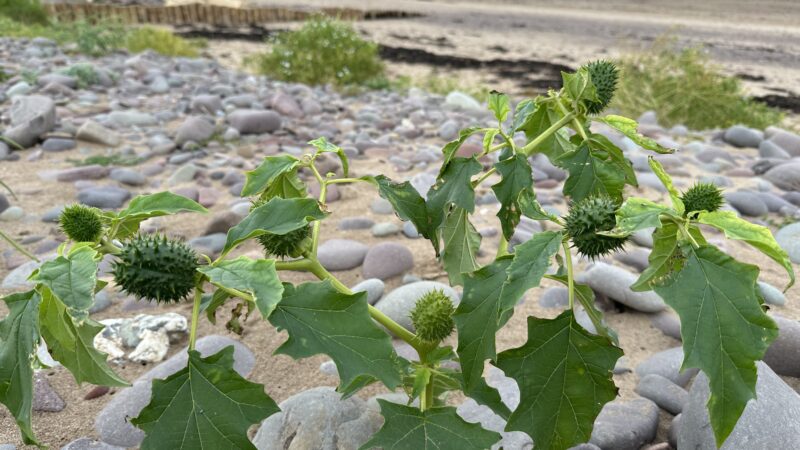The first lizard of the year

A wriggle in the grass – something scampering, body curving, tail undulating from side to side. Start, stop and off again into the heather, its slim, twiggy shape mimicking the plant stems. A lizard, the first of the year.
It’s sunny on the moor and by mid-afternoon the south side of Shilstone Hill has warmed, stones absorbing heat and releasing it into the peat like thousands of small granite radiators. The rising temperature has brought humans out on to the moor as well as other creatures – a gaggle of teenagers carrying rucksacks, walkers with dogs, and my group on horseback. Our mounts’ hooves squish through patches of mire, printing muddy hoops into the green. March was unusually wet, and even the high ground is sodden.
Lizards generally prefer drier conditions. The one I see is a common or viviparous lizard (Zootoca vivipara), so called because the females incubate their eggs inside their bodies, rather than laying them in shells to hatch later. During the summer, as their flanks grow wide, they will spend long periods basking in the sun to aid development of the brood within. In July and August they give birth, producing up to 11 young encased in transparent membranes, which split open immediately.
Blackish at first, the juveniles turn bronze-brown and then develop a beaded pattern of spots and stripes. Colours vary through yellow, browns and greens, with some remaining wholly black. While no individual is the same, females tend to be stripier and males spottier.
This specimen has an olive back with darker stripes, but I cannot be sure of its sex without seeing its underside. Males have distinctive yellowy-orange mottled bellies, which are even brighter than usual this month because they have sloughed their old skins in preparation for the mating season. Courtship is brief – females seek out mates, which seize them in their jaws, usually within seconds of meeting. Females refuse an undesirable male by biting back fiercely and running away.
Swiftness and violence are part of these creatures’ hunting strategy, albeit on a micro scale. They eat small insects, spiders and earthworms, which they grab and shake to stun before crunching along the length and swallowing whole, often headfirst.
Despite this seeming aggression, they are a relatively social and peaceable species. While occasional individuals seem to prefer a solitary life, most live in small groups and can have lifespans of five or six years.
First published in The Guardian’s Country Diary on 6 April 2023.
Image of common lizard by Thomas Brown, CC BY 2.0 https://creativecommons.org/licenses/by/2.0, via Wikimedia Commons.





